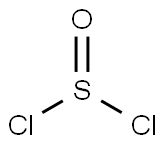4-Vinylbenzyl chloride
Synonym(s):4-(Chloromethyl)styrene
- CAS NO.:1592-20-7
- Empirical Formula: C9H9Cl
- Molecular Weight: 152.62
- MDL number: MFCD00051362
- EINECS: 216-471-2
- SAFETY DATA SHEET (SDS)
- Update Date: 2024-12-18 14:07:02

What is 4-Vinylbenzyl chloride?
Chemical properties
clear yellow liquid
The Uses of 4-Vinylbenzyl chloride
Component of ion exchange resins, photo-resist polymers, cross-linkable fibers, coupling agents and electroconducting polymers.
Starter for various copolymer preparations.
Dual functional monomer. Readily derivatized by chloride displacement.
What are the applications of Application
4-Vinylbenzyl chloride is a component of polymerization reactions and high internal phase emulsions
Purification Methods
Purify 4-vinylbenzyl chloride by dissolving it in Et2O, washing it with 0.5% of aqueous NaOH, separating, drying the organic layer (Na2SO4), evaporating and distilling the residual oil under N2 in vacuo. Add 0.05% of 4-tert-butylcatechol as stabilizer. It is lachrymatory. [Nishikubo et al. Tetrahedron Lett 22 3872 1981, Tanimoto et al. Synth Commun 4 193 1974, Beilstein 6 IV 3818.]
Properties of 4-Vinylbenzyl chloride
| Boiling point: | 229 °C(lit.) |
| Density | 1.083 g/mL at 25 °C(lit.) |
| vapor density | 5.3 (vs air) |
| vapor pressure | 1 mm Hg ( 56.1 °C) |
| refractive index | n |
| Flash point: | 221 °F |
| storage temp. | 2-8°C |
| Water Solubility | Insoluble in water |
| solubility | Chloroform (Sparingly) |
| form | Liquid |
| color | Clear yellow |
| BRN | 2204384 |
| Stability: | Light Sensitive |
| CAS DataBase Reference | 1592-20-7(CAS DataBase Reference) |
| EPA Substance Registry System | Benzene, 1-(chloromethyl)-4-ethenyl- (1592-20-7) |
Safety information for 4-Vinylbenzyl chloride
| Signal word | Danger |
| Pictogram(s) |
 Corrosion Corrosives GHS05  Skull and Crossbones Acute Toxicity GHS06 |
| GHS Hazard Statements |
H302:Acute toxicity,oral H311:Acute toxicity,dermal H314:Skin corrosion/irritation H317:Sensitisation, Skin |
| Precautionary Statement Codes |
P261:Avoid breathing dust/fume/gas/mist/vapours/spray. P270:Do not eat, drink or smoke when using this product. P280:Wear protective gloves/protective clothing/eye protection/face protection. P301+P312:IF SWALLOWED: call a POISON CENTER or doctor/physician IF you feel unwell. P303+P361+P353:IF ON SKIN (or hair): Remove/Take off Immediately all contaminated clothing. Rinse SKIN with water/shower. P305+P351+P338:IF IN EYES: Rinse cautiously with water for several minutes. Remove contact lenses, if present and easy to do. Continuerinsing. |
Computed Descriptors for 4-Vinylbenzyl chloride
| InChIKey | ZRZHXNCATOYMJH-UHFFFAOYSA-N |
New Products
(S)-3-Aminobutanenitrile hydrochloride 4-Methylphenylacetic acid N-Boc-D-alaninol N-BOC-D/L-ALANINOL Tert-butyl bis(2-chloroethyl)carbamate 3-Morpholino-1-(4-nitrophenyl)-5,6-dihydropyridin- 2(1H)-one Furan-2,5-Dicarboxylic Acid Tropic acid 1-Bromo-3,5-Di-Tert-Butylbenzene S-2-CHLORO PROPIONIC ACID ETHYL ISOCYANOACETATE 2-Bromo-1,3-Bis(Dimethylamino)Trimethinium Hexafluorophosphate 4-IODO BENZOIC ACID 3-NITRO-2-METHYL ANILINE 1-(2,4-DICHLOROPHENYL) ETHANAMINE (2-Hydroxyphenyl)acetonitrile 4-Bromopyrazole 2-(Cyanocyclohexyl)acetic acid 4-methoxy-3,5-dinitropyridine 1-(4-(aminomethyl)benzyl)urea hydrochloride 2-aminopropyl benzoate hydrochloride diethyl 2-(2-((tertbutoxycarbonyl)amino) ethyl)malonate tert-butyl 4- (ureidomethyl)benzylcarbamate Ethyl-2-chloro((4-methoxyphenyl)hydrazono)acetateRelated products of tetrahydrofuran




![2-[[(2-ethylphenyl)(2-hydroxyethyl)amino]methyl]-3,3-difluoro-Propanenitrile](https://img.chemicalbook.in/CAS/GIF/2647-14-5.gif)



You may like
-
 4-(Chloromethyl)styrene (stabilized with TBC + ONP + 2-Nitro-p-cresol) CAS 1592-20-7View Details
4-(Chloromethyl)styrene (stabilized with TBC + ONP + 2-Nitro-p-cresol) CAS 1592-20-7View Details
1592-20-7 -
 4-Vinylbenzyl chloride CAS 1592-20-7View Details
4-Vinylbenzyl chloride CAS 1592-20-7View Details
1592-20-7 -
 4-Vinylbenzyl chloride CAS 1592-20-7View Details
4-Vinylbenzyl chloride CAS 1592-20-7View Details
1592-20-7 -
 1975-50-4 98%View Details
1975-50-4 98%View Details
1975-50-4 -
 2-HYDROXY BENZYL ALCOHOL 98%View Details
2-HYDROXY BENZYL ALCOHOL 98%View Details
90-01-7 -
 2-Chloro-1,3-Bis(Dimethylamino)Trimethinium Hexafluorophosphate 221615-75-4 98%View Details
2-Chloro-1,3-Bis(Dimethylamino)Trimethinium Hexafluorophosphate 221615-75-4 98%View Details
221615-75-4 -
 14714-50-2 (2-Hydroxyphenyl)acetonitrile 98+View Details
14714-50-2 (2-Hydroxyphenyl)acetonitrile 98+View Details
14714-50-2 -
 118753-70-1 98+View Details
118753-70-1 98+View Details
118753-70-1